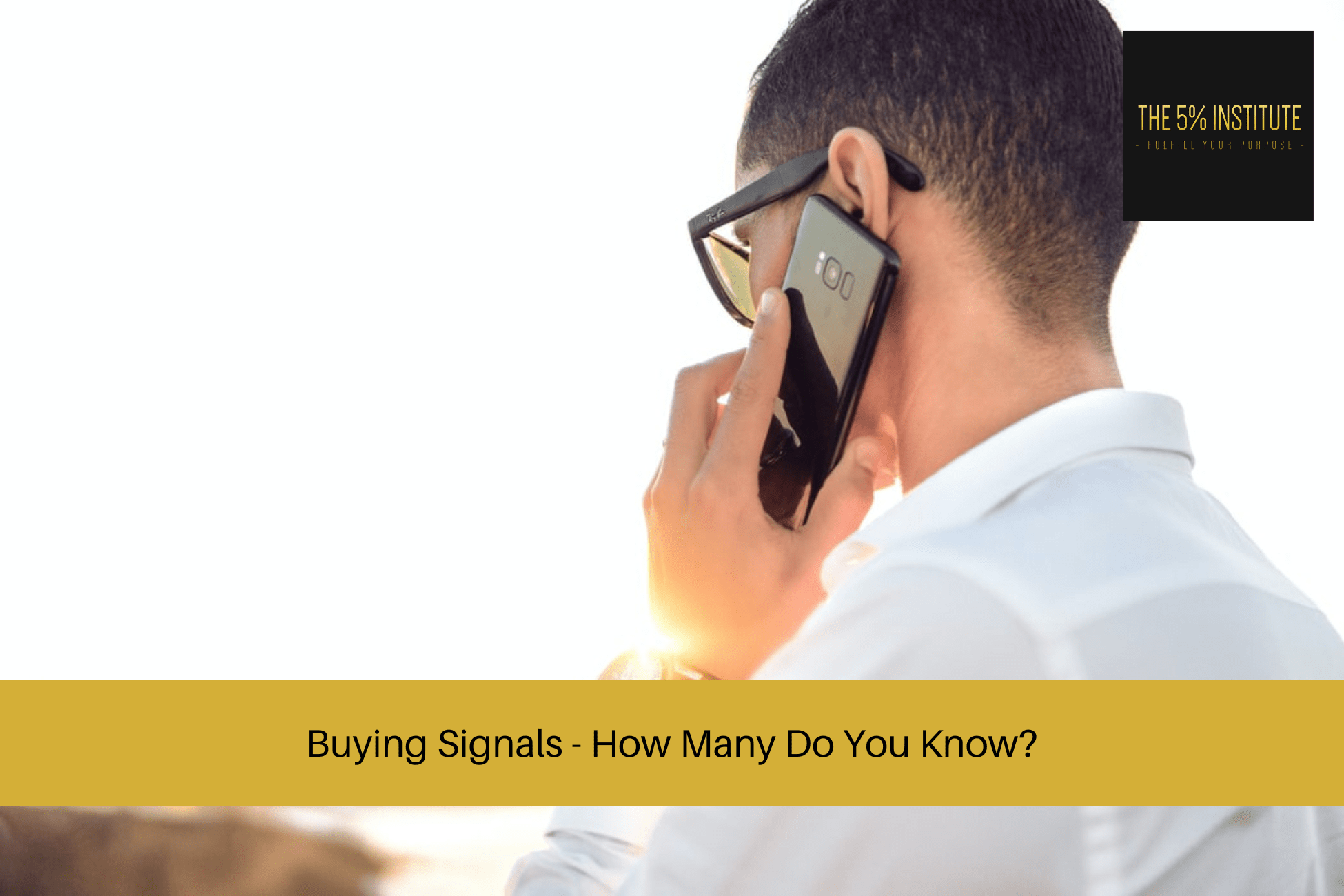
Buying Signals – How Many Do You Know?
In the world of sales and marketing, identifying buying signals is crucial to success.
These signals provide valuable insights into a potential customer’s purchase intent, allowing businesses to tailor their approach and increase conversion rates.
This article aims to explore the concept of buying signals, their importance, and how businesses can leverage them to drive sales and enhance customer experiences.
Introduction
In today’s competitive marketplace, understanding customer behaviour is more critical than ever.
Businesses need to identify and interpret buying signals to optimize their sales strategies and stay ahead of the competition.
Buying signals are indicators that signify a potential customer’s interest in purchasing a product or service.
By recognizing and acting upon these signals, businesses can drive conversions and foster long-term customer relationships.
What are Buying Signals?
Buying signals encompass verbal, non-verbal, and digital cues that demonstrate a customer’s intention to make a purchase.
These signals can be explicit, such as a direct request for information about pricing or availability, or more subtle, like positive body language during a sales conversation.
Identifying these signals allows businesses to respond appropriately and provide the necessary support to guide customers through the purchasing process.
Types of Buying Signals
Verbal Buying Signals
Verbal buying signals refer to explicit statements or questions made by customers that indicate their interest in buying.
Examples include inquiries about product specifications, pricing negotiations, or requests for product demonstrations.
These signals are often straightforward and easily recognizable, making them valuable opportunities for sales teams to capitalize on.
Non-Verbal Buying Signals
Non-verbal signals involve body language and other subtle cues that convey a customer’s interest or intent to purchase.
These signals can include positive gestures, facial expressions, or even the customer’s physical proximity to a product or display.
Sales professionals skilled in reading non-verbal signals can adjust their approach accordingly and enhance the customer experience.
Digital Buying Signals
In the digital age, buying signals extend beyond face-to-face interactions.
Digital purchase intent signals encompass various online activities, such as website visits, clicks on specific product pages, or engagement with marketing emails and social media posts.
By tracking these signals through analytics tools, businesses can gain valuable insights into customer behaviour and preferences.
Recognizing Buying Signals
To effectively identify buying signals, businesses must pay close attention to verbal, non-verbal, and digital cues exhibited by potential customers.
Here are some key strategies for recognizing purchase intent:
Listening for Verbal Cues
When engaging with customers, attentive listening is crucial.
Paying close attention to their questions, concerns, and statements can reveal valuable insights into their purchase intent.
Look for indications of urgency, specific product requirements, or comparisons with competitors, as these are often strong buying signals.
Observing Body Language
Non-verbal cues can provide powerful insights into a customer’s level of interest and engagement.
Positive body language, such as leaning in, nodding, or maintaining eye contact, often indicates a higher likelihood of purchase.
Conversely, crossed arms, a lack of engagement, or signs of impatience may suggest the need for further assistance or clarification.
Analysing Digital Interactions
Digital platforms offer a treasure trove of buying signals.
By leveraging web analytics, social media monitoring tools, and CRM systems, businesses can track customer interactions, such as website visits, time spent on specific pages, or engagement with marketing campaigns.
These digital signals can help businesses understand customer preferences and tailor their approach accordingly.
Leveraging Buying Signals
Once buying signals are identified, businesses can leverage them to drive sales and enhance customer experiences.
Here are some effective strategies for capitalizing on buying signals:
Personalized Communication
Using the insights gained from buying signals, businesses can personalize their communication with potential customers.
Tailoring messages and offers to align with customer preferences and needs significantly increases the chances of conversion.
Personalized emails, targeted advertising campaigns, and customized product recommendations are just a few examples of how businesses can leverage buying signals to deliver a more personalized experience.
Timely Follow-ups
Prompt follow-ups are essential to maintain momentum when a buying signal is detected.
Whether it’s responding to a customer’s inquiry, providing additional information, or offering a special promotion, timely follow-ups demonstrate a proactive approach and reinforce the customer’s interest in making a purchase.
Tailored Recommendations
By understanding a customer’s buying signals, businesses can make tailored product recommendations.
This proactive approach showcases the business’s understanding of the customer’s needs and helps them discover relevant offerings they may not have considered.
Tailored recommendations based on buying signals increase the likelihood of conversion and foster customer loyalty.
Tools for Tracking Buying Signals
To effectively track and interpret buying signals, businesses can utilize various tools and technologies.
Here are some commonly used tools for monitoring and analysing customer behaviour:
Customer Relationship Management (CRM) Systems
CRM systems allow businesses to manage and analyse customer data, interactions, and buying patterns.
These systems help identify patterns in customer behaviour and enable businesses to tailor their approach based on buying signals.
Social Media Monitoring Tools
Monitoring social media platforms provides valuable insights into customer sentiment and engagement.
By tracking mentions, comments, and interactions, businesses can identify buying signals and respond accordingly.
Social media monitoring tools help businesses stay connected with their audience and build meaningful relationships.
Web Analytics Platforms
Web analytics platforms offer a comprehensive view of customer interactions on websites.
By analysing data such as page views, click-through rates, and conversion funnels, businesses can gain insights into customer behaviour and buying signals.
This information can be used to optimize website design, content, and marketing strategies.
Challenges in Interpreting Buying Signals
While recognizing buying signals is crucial, it’s essential to be aware of the challenges involved in interpretation.
Here are some common hurdles businesses may encounter:
False Positives
Not every buying signal guarantees a purchase.
Customers may display interest or curiosity without a genuine intention to buy.
It’s crucial to consider additional factors and context before making assumptions and taking action.
Contextual Understanding
Buying signals can vary based on the context, industry, and individual customer preferences.
It’s essential to have a comprehensive understanding of the customer’s needs, pain points, and unique circumstances to interpret signals accurately.
Cultural Differences
Cultural nuances can impact the way customers express their buying signals.
Businesses operating in diverse markets must be sensitive to cultural differences to avoid misinterpretation and ensure effective communication.
Conclusion
Recognizing and leveraging buying signals can significantly enhance sales performance and customer satisfaction.
By understanding the different types of signals and employing effective strategies for identification and interpretation, businesses can tailor their approach, provide personalized experiences, and increase conversion rates.
Embracing tools and technologies that track customer behaviour further amplifies the effectiveness of leveraging signals in sales and marketing efforts.
Frequently Asked Questions (FAQs)
Q1. Can buying signals be present in online interactions?
Yes, buying signals can manifest in various online interactions, such as website visits, clicks, and engagement with digital marketing campaigns.
Tracking these digital signals provides valuable insights into customer behaviour and preferences.
Q2. What are some common examples of non-verbal buying signals?
Non-verbal buying signals include positive body language, such as nodding, maintaining eye contact, or physically interacting with a product or display.
These cues indicate a customer’s interest or intent to make a purchase.
Q3. How can businesses leverage buying signals for personalized communication?
By analysing buying signals, businesses can gain insights into customer preferences and needs.
This information can be used to personalize communication through targeted messaging, customized offers, and tailored product recommendations.
Q4. What challenges can arise when interpreting buying signals?
Challenges in interpreting buying signals include false positives, where a customer expresses interest without genuine purchase intent, the need for contextual understanding based on industry and customer preferences, and cultural differences that impact the way signals are expressed.
Q5. How can businesses effectively track and analyse buying signals?
Utilizing tools such as CRM systems, social media monitoring tools, and web analytics platforms can help businesses track and analyse buying signals.
These tools provide valuable data and insights into customer behaviour, enabling businesses to optimize their sales and marketing strategies.
Want To Close Sales Easier?
Are you committed to closing sales a lot easier, and consistently?
If so, you should check out our self-paced and affordable online sales training program; The 5% Sales Blueprint.
It’ll give you everything you need to close sales consistently.
To learn more, simply click on the link below for more information.
Our Online Sales Training Program – The 5% Sales Blueprint.



